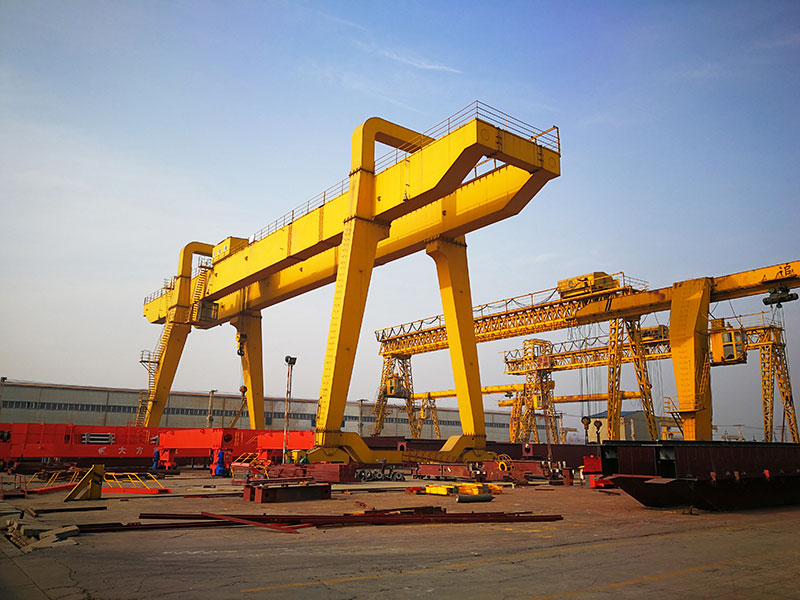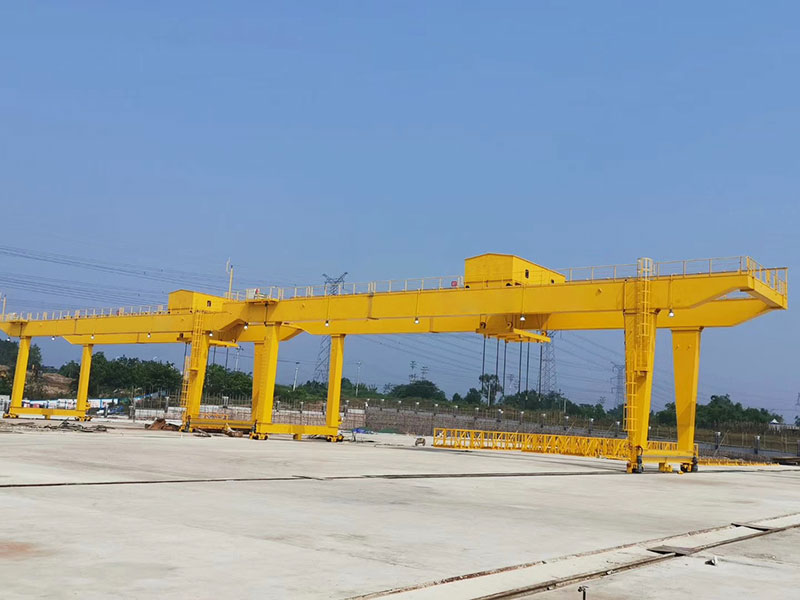When it comes to industrial lifting solutions, a 30-ton gantry crane stands out as a robust and versatile choice for various applications. Whether used in manufacturing, construction, or shipping, the right gantry crane can significantly enhance operational efficiency and safety. However, purchasing such a substantial piece of equipment is no small feat; it requires careful consideration to ensure you choose a crane that meets your specific needs. Below are the top five things to consider when buying a 30-ton gantry crane.

1. Lifting Capacity and Specifications
The foremost consideration when purchasing a gantry crane is its lifting capacity. A 30-ton gantry crane is designed to lift loads of up to 30 tons safely. However, it’s crucial to assess your lifting requirements thoroughly. Will the crane be lifting its maximum capacity regularly, or will it be used for lighter loads? Understanding your lifting needs can help determine whether a 30-ton crane is appropriate or if you require a crane with a higher capacity.
In addition to load capacity, consider the crane’s span and lifting height. The span refers to the distance between the legs of the crane, which dictates how wide an area the crane can cover. Ensure that the span fits within the layout of your workspace. Likewise, the lifting height must accommodate the maximum height of the loads being lifted. Be aware that the specifications may vary among different models and manufacturers, so it’s advisable to request detailed technical information to compare various options effectively.
Key Questions to Ask:
- What is the maximum load you need to lift?
- How often will the crane be lifting heavy loads?
- What is the required lifting height and span for your operations?
2. Construction and Material Quality
The construction quality of an Aicrane gantry crane significantly influences its durability, safety, and overall performance. A well-built crane can withstand the rigors of heavy-duty use, while a poorly constructed one may lead to maintenance issues and safety risks.
Look for cranes made from high-quality materials, such as structural steel or other durable alloys. Steel cranes, for example, offer strength and stability, making them ideal for heavy lifting applications. Additionally, check the welding quality, finishing, and corrosion resistance of the crane. A good coating or treatment can prolong the life of the crane, especially if it will be used in harsh environments.
Furthermore, consider the design features that contribute to the crane’s strength and stability, such as cross bracing, the thickness of the main beams, and the quality of the wheels and casters. Investing in a crane with superior construction quality can save you money in the long run by reducing repair and replacement costs.

Key Questions to Ask:
- What materials are used in the crane’s construction?
- What kind of warranty or guarantee does the manufacturer offer?
- How has the crane been tested for quality and durability?
3. Mobility and Maneuverability
Mobility is another critical aspect to consider when purchasing a 30-ton gantry crane. Depending on your operational needs, you may require a stationary crane or a mobile one that can be easily relocated within your facility.
Mobile gantry cranes come with wheels or tracks that allow them to be moved from one area to another. This flexibility can be particularly useful in warehouses, manufacturing plants, or construction sites where multiple lifting points are needed. Look for rubber tyre gantry cranes with high-quality wheels designed for smooth movement and stability, especially when fully loaded.
Additionally, consider the steering mechanism of the crane. Cranes with different steering modes (such as fixed, articulated, or crab steering) offer varying degrees of maneuverability. If your workspace is constrained, a crane with better maneuverability may be essential to ensure safe and efficient operation.
Key Questions to Ask:
- Do you need a stationary or mobile gantry crane?
- What is the surface type where the crane will be used?
- How easy is it to maneuver the crane in your workspace?
4. Safety Features
Safety should be paramount when choosing any industrial lifting equipment. A 30-ton gantry crane should come equipped with several safety features to minimize the risk of accidents and injuries.
Look for cranes with overload protection systems that prevent lifting loads beyond the crane’s capacity. This feature is crucial for avoiding mechanical failures and ensuring the safety of workers. Additionally, consider cranes equipped with limit switches, which can automatically stop the lifting operation if the load reaches a certain height.
Other important safety features include:
- Emergency stop buttons: Easily accessible emergency stop buttons can halt the crane’s operation quickly in case of an emergency.
- Anti-collision systems: These systems help prevent collisions between the crane and obstacles in the workspace.
- Safety guards: Proper safety guards can protect workers from falling loads and other hazards.
Furthermore, ensure that the crane meets local and international safety standards. Manufacturers often provide certifications to demonstrate compliance with safety regulations, which can provide peace of mind when making your purchase.
Key Questions to Ask:
- What safety features are included with the crane?
- Does the crane comply with local and international safety standards?
- What kind of training is provided for operators to ensure safety?
5. Cost and Value for Money
Finally, consider the cost of the gantry crane in relation to the value it brings to your operations. While it can be tempting to go for the cheapest option, the initial purchase price does not always reflect the long-term value.
Look for a balance between affordability and quality. Investing in a high-quality double girder gantry crane may come with a higher upfront cost but can save you money in repairs and downtime in the future. Additionally, consider the total cost of ownership, which includes maintenance costs, operational costs, and any necessary upgrades.
Don’t hesitate to ask for quotes from multiple suppliers and compare their offerings. Make sure to evaluate the warranty and after-sales service they provide, as these factors can significantly impact your satisfaction and peace of mind after the purchase.
Key Questions to Ask:
- What is the total cost of ownership for this crane?
- Are there any hidden costs, such as shipping or installation?
- What kind of after-sales support is offered by the manufacturer?
Conclusion
Purchasing a 30-ton gantry crane is a significant investment that can greatly enhance your lifting operations. By carefully considering the lifting capacity, construction quality, mobility, safety features, and overall cost, you can make an informed decision that meets your specific needs. Take the time to conduct thorough research and consult with industry professionals to ensure you select the right gantry crane that will provide reliable performance for years to come. With the right crane in place, you can improve efficiency, productivity, and safety in your workplace.